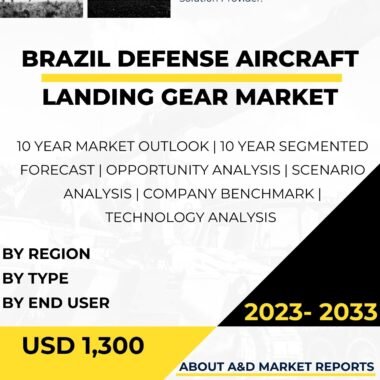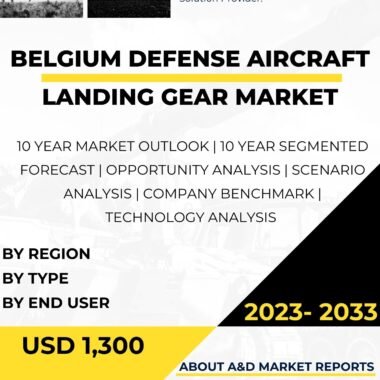Description
The Brazil Weapon Locating Radar Market holds significant importance for the country’s defense and security capabilities, as it seeks to adopt cutting-edge technologies to enhance its counter-fire capabilities and protect its armed forces from enemy artillery threats. Weapon Locating Radar (WLR) is a sophisticated radar system designed to detect and track incoming enemy artillery projectiles, rockets, and mortars, providing early warning and precise location data to enable effective countermeasures. As Brazil faces diverse security challenges and seeks to modernize its armed forces, the market for Weapon Locating Radar has gained prominence. This article provides a comprehensive analysis of the Brazil Weapon Locating Radar Market, covering its current state, key drivers, challenges, applications, technological advancements, and growth prospects.
The Brazil Weapon Locating Radar Market has witnessed considerable growth due to the country’s recognition of the strategic importance of adopting advanced radar systems to enhance its counter-fire capabilities. As a large and geographically diverse nation, Brazil seeks to equip its armed forces with cutting-edge Weapon Locating Radar to detect and respond effectively to incoming enemy artillery threats and enhance the safety of its military personnel.
One of the key drivers behind the market’s prominence is the need to improve Brazil’s artillery detection and countermeasure capabilities. Weapon Locating Radar offers a critical advantage in providing early warning of enemy artillery attacks, enabling rapid response and effective counter-fire operations to neutralize enemy threats.
Moreover, the Brazil Weapon Locating Radar Market is driven by the country’s ambition to achieve technological self-reliance in the defense sector. By developing and producing domestic Weapon Locating Radar systems, Brazil aims to reduce dependency on foreign suppliers and foster its indigenous defense industry. This strategic approach not only enhances the country’s defense capabilities but also boosts its defense industrial base and creates skilled jobs in the high-tech sector.
The market’s growth is also influenced by Brazil’s interest in enhancing the safety and protection of its armed forces. Weapon Locating Radar systems provide critical intelligence on the location and trajectory of incoming enemy projectiles, enabling military personnel to take appropriate cover and minimize casualties during artillery attacks.
The Brazil Weapon Locating Radar Market finds diverse applications across various defense and security domains, each contributing to the country’s overall counter-fire capabilities. In the defense sector, Weapon Locating Radar is crucial for detecting and tracking enemy artillery projectiles, rockets, and mortars. These advanced radar systems use sophisticated algorithms and signal processing techniques to accurately identify the origin and trajectory of incoming threats, providing real-time data to military commanders for rapid response.
Furthermore, Weapon Locating Radar plays a vital role in enhancing artillery counter-fire operations. By providing precise location data of enemy firing positions, these radar systems enable artillery units to conduct effective counter-fire missions, neutralizing enemy threats and degrading their firing capabilities.
Moreover, the Brazil Weapon Locating Radar Market serves as a critical component of the country’s efforts to bolster its border security. By deploying Weapon Locating Radar along its borders, Brazil can enhance its border monitoring capabilities and detect potential security threats from across the borders.
Additionally, Weapon Locating Radar systems are indispensable for protecting key infrastructure and military installations. By deploying these radar systems around critical facilities, Brazil can enhance their security and respond promptly to any hostile artillery attacks targeting vital assets.
Despite the market’s growth and potential, the Brazil Weapon Locating Radar Market also faces certain challenges. One significant challenge is the technical complexity of developing and deploying advanced radar systems. Designing and operating Weapon Locating Radar that can accurately detect and track fast-moving artillery projectiles in various environmental conditions require substantial investments in research, development, and testing.
The regulatory landscape surrounding the export and transfer of advanced military technologies, including Weapon Locating Radar, also poses challenges. Compliance with international agreements and export controls while pursuing technological advancements can impact the accessibility of advanced Weapon Locating Radar systems for Brazil’s defense industry.
Moreover, addressing the issue of integration and coordination between Weapon Locating Radar and other defense systems is crucial for effective operations. Ensuring seamless integration and cooperation between radar systems and counter-fire units is essential to maximize their utility and effectiveness in various military and security tasks.
Looking ahead, the Brazil Weapon Locating Radar Market is expected to witness continued growth and advancements. As the country faces evolving security challenges and seeks to enhance its counter-fire capabilities, the demand for Weapon Locating Radar will remain strong. Continued investment in research and development, technology transfer agreements with international partners, and collaboration between the government and private sector will drive advancements in Weapon Locating Radar technology and applications.
In conclusion, the Brazil Weapon Locating Radar Market plays a pivotal role in the country’s efforts to enhance its counter-fire capabilities and protect its armed forces from enemy artillery threats. Weapon Locating Radar systems provide critical advantages in early warning, accurate detection, and effective response to incoming enemy projectiles, ensuring that Brazil’s armed forces have the necessary tools and support to respond effectively to artillery attacks. The market’s growth is driven by Brazil’s commitment to achieving technological self-reliance, bolstering its defense capabilities, and fostering innovation in the high-tech sector. Addressing challenges related to technical complexity, regulation, integration, and international cooperation will be key to unlocking the full potential of Weapon Locating Radar in strengthening Brazil’s defense capabilities and safeguarding its military personnel and infrastructure.




